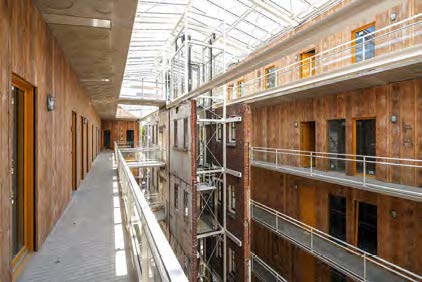

Wood should be the material of choice for construction projects including domestic, commercial and civil engineering. For almost every situation, however, wood available in commercial quantities requires protection against biological agencies and fire.
Wood species supplied commercially include pine, spruce, douglas fir and larch and these make up the highest proportion of wood used in construction. Timber sawn from these species includes perishable sapwood and exposed heartwood of varying durability and are susceptible to attack by insects and, if the wood becomes and remains wet, wood-destroying fungi.
For each situation, treatment standards in Europe define the appropriate combination of preservative penetration and uptake necessary to protect the wood against attack by these agencies. Unless treatment is carried out under careful quality management procedures that define wood condition including moisture content, preservative concentration and the combination of vacuum and pressure during treatment, it may fail to achieve the correct penetration and uptake and may lead to premature failure in service. Treatment companies should use third-part quality assurance processes such as ISO 9001 and, preferably, independent assessment of treated wood.
Further reading about quality can be found on the page National quality regimes and industry standards